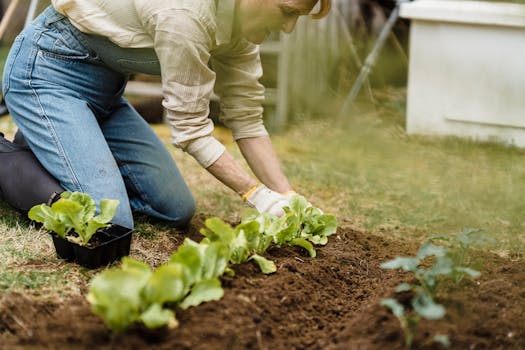This is the first year I’ve ever done a Square Foot Garden. I mean, I’ve grown tomatoes and cucumbers and peppers before, and maybe some herbs. But I’ve never really tried a full, true vegetable garden. So this year will truly be an experiment. I’ve done lots of research, though, and talked to friends about what works for them. So I think I’ve got a plan that has a shot at working. Let’s take a look at my 2017 square foot garden planting plan.
The boxes are all 12″x12″ (the famed Square Foot), and this shows what will be planted in which box, on (approximately) what date. Almost everything is going in as seeds direct sown into the garden. The exceptions are the tomatoes (seedlings), garlic (sets), onions (sets) and maybe a couple cucumbers (seedlings).
In places where you see two entries, I’m splitting the square foot into two sections for succession planting over the season, to try to spread out the harvest a little.
In the squares with dotted outlines, I’m planning a second crop after the first ones are done in the early summer. Here’s the chart showing what I’ll put into those squares, and when, after the first crops are done.
In addition to the main 4’x8′ raised bed, I’ll be putting some plants into large containers nearby, and into some 4’x6″ window boxes on the back porch. Here’s the plan for those:
And here’s the overall week-by-week list of what will be planted when. This chart makes it easier for me to keep track of what I’m supposed to be doing.
As I said before, I’m going to plant nearly everything from seed. Some of the seeds will go directly into the ground where I want them to grow. But I’ll be starting some seeds in flats, too, a little ahead of the planting dates listed above, to try my hand at that. I’ve ordered this inexpensive, portable mini-greenhouse rack (affiliate link):
My plan is to store the rack on our sunny driveway during the day, and roll it into the garage overnight. I’m hoping that the warm air inside the plastic covering on the rack will help me grow seedlings without investing in grow lights and heat mats and all that stuff indoors. We’ll see!
So that’s the plan.
Some of you might be wondering how I arrived at this plan, especially since I don’t have any prior experience to draw from. We’ll let me go through my steps real quick:
How I Created My Square Foot Garden Planting Plan
Step 1: Make a Wish List
I made a list of all the vegetables that I wanted to try. My list included only those vegetables that I know we’ll actually eat. Why grow something if you don’t like eating it? I didn’t include EVERYTHING that we eat. I didn’t include broccoli, cauliflower, cabbage, peppers, for example. Why? Well, for one, I’ve heard that some of these are hard to get real yields from – broccoli takes up a lot of space, and you only get one head out of the plant. I’d rather plant something I can get a lot of, and buy the broccoli at the farmer’s market or grocery store.
Step 2: Learn about the plants
I did a lot of googling: How to grow onions. how to grow green beans. etc. I took notes in my garden journal. Some of my plants got eliminated at this stage because of my perception of how hard they would be to grow, how much space or sun they need, etc.
Step 3: Look up when to plant things
Use your state’s Agricultural Extension Service to it’s max… they have all kinds of information about growing vegetables in your local climate, what dates to put things in the ground, what varieties work well in your area, etc. The one I used was: Vegetable Planting Calendar for Central Maryland . I made my list of vegetables, then looked each one up individually.
Step 4: Make a calendar
After I had all the info about when to plant the various vegetables, then I put the info into a calendar, week by week (see image earlier in this post).
Step 5: Make your plot map
Armed with all of this info, I drew a 4×8 grid and started penciling in my draft of what to put where. I put the tomatoes on one end so they could grow out and over the side. I put the peas and cucumbers one row away from the edge, so that they could grow up a trellis and I could still reach the plants on either side of them. They’ll provide shade to the lettuce and spinach as the season grows warmer.
Step 6: Adjust for companion planting
I did some research into companion planting. Each vegetable has its preferred growing partners, and some enemies. Some plants put off chemicals that harm or inhibit other plants, so they should not be near each other. Don’t put onions near beans or peas, for example. Some plants have similar diseases, so they should be separated to try to limit the spread of that disease. Some plants benefit from being near its partner – the Three Sisters of beans, corn and squash are a great example of plant partners that goes back to Native American tradition and is supported by agricultural research. You can find all of this info by some simple google searches. After you’ve got this info, you may have to rearrange your plot to accommodate what you’ve learned.
That’s it! It’s a bit of a puzzle, at least it was for me. I spent a couple afternoons immersed in this project, and the plan you see above is the result. Will it work? Well, we’ll find out this summer, won’t we?
Thanks for stopping by. What do you think of my square foot garden planting plan? Do you see anything glaring that I’ve messed up? Should I adjust anything in the plan? I’d love to hear your thoughts and learn from your experience. Please do leave a comment to share your thoughts!
Happy planting!
Article source: http://www.harmonyhillshomeandgarden.com/2017/03/square-foot-garden-planting-plan-2017.html
SHARE IT SO OTHERS CAN FIND THE BEST GARDENING INFO



